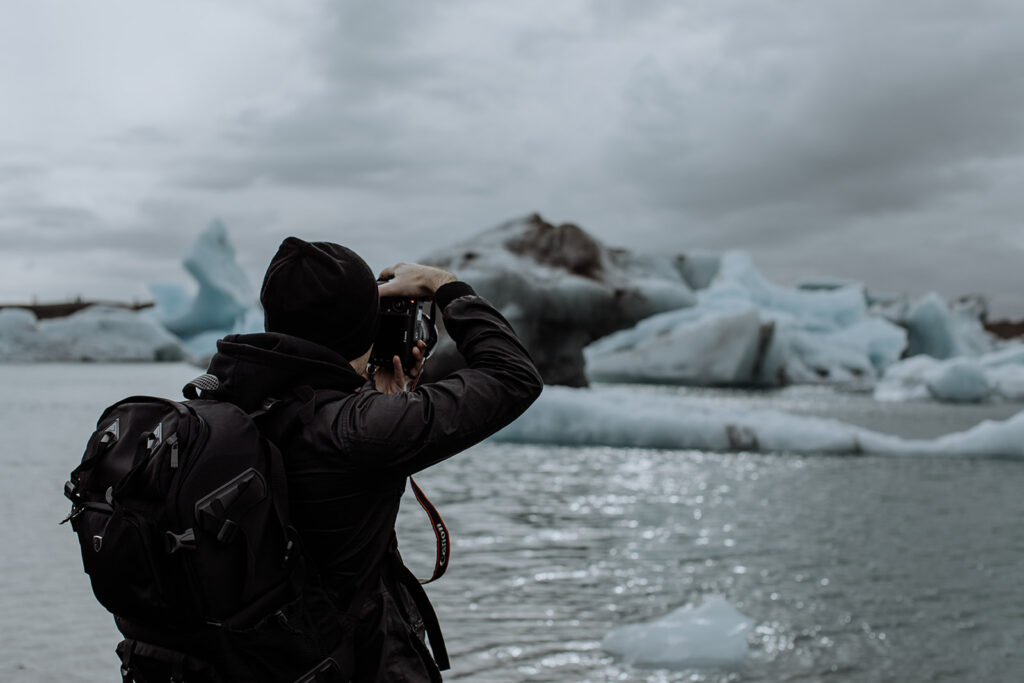We're a team of wedding, elopement and portrait photographers who put community over competition. We provide tips and resources for Photographers looking to up-level their businesses.
We're here to help When you join The Photography Business Academy
Why Retainer Payments Are Essential for Your Photography Business
Retainer payments—sometimes more low key referred to as deposits—are a crucial part of running a successful photography business.
That might seem a little dramatic when you read that sentence, but in this article I’m going to make a case for why they are so valuable and should be seen as essential for any photographer in business.
What is a Retainer Payment, anyways?
A “retainer” is when a client pays you money (normally their first payment to your business for a project) as a means of securing you as their photographer.
As we mentioned in the intro, this payment is often referred to as a “deposit” both by photographers and clients – but as we’ll learn in a little bit, while they functionally are similar (initial payment for a service), their meaning is quite different. But, more on that in a moment…
So – retainers, what are they?
As photographers, a retainer payment is valuable because it does the following…
They don’t just secure a spot on your calendar, they also solidify the client’s commitment, ensure you receive compensation for your time, and act as a safety net if the client cancels or reschedules.
The retainer payment is earned once it is accepted, whereas that may not be the case for all money given to you before a project.

Retainer vs. Deposit – What’s the Difference?
Before we really begin this post talking about retainer payments in all their glory, one thing we want to highlight real quick is the suggestion to use the term “retainer” instead of “deposit.”
This is a sort of legal distinction and while in passing conversation isn’t much of a big deal, in business it actually does matter.
Why?
Let’s look at a few key features of each term (info sourced from this site):
- Retainer:
- Non-refundable.
- Paid to reserve a service provider’s time, expertise, or availability.
- Commonly used in legal, photography, and event planning.
- Serves as a fee to cover initial costs and secure the service provider’s availability.
- Deposit:
- Refundable or can be credited towards the final payment.
- Paid as a partial payment towards the total cost of goods or services.
- Commonly used in various contexts, such as rentals, sales, and service agreements.
- Often acts as a guarantee of the transaction.
Another way to look at retainers is by shifting your view of what you are offering as a photography business.
For example, you could hold a view that while you offer a photography service that could happen any day, your “inventory” is the available days you have and by setting aside a day for work (for someone’s wedding, elopement or portrait session). Because of this limited inventory, when someone hires you, they are requiring you to commit your resources to that date + time, and pass up opportunities that could otherwise come in.
In addition, as photographers, retainers are typically more legally binding, making them a better choice when it comes to protecting your business. This is said not just arbitrarily but based on actual case law.
So…make sure this is reflected in both your contracts and communication with clients.
With that said…let’s talk more about retainers for photographers…

Flat Fee vs. Percentage-Based Retainers
Over the years, we’ve seen photographers handle retainers in many ways—some use a percentage of the total package price, while others opt for a flat fee.
We have even experimented with different methods ourselves. 10% retainers, 25% retainers, 50% retainers…various flat fees…
In practice, you can have success with any method but unless you have a specific reason for using a percentage-based retainer, we recommend switching to a flat fee.
Here’s a few reasons why:
1. Simplicity for Clients = Easier Sales
Flat fees are easier for clients to understand.
No doubt about it!
There’s no math involved, and it keeps the booking process smooth, especially during a time when your clients are already juggling a lot of financial commitments (like booking venues, florists, etc.). This is especially true if you are a wedding photographer primarily.
But even portrait photographers can benefit from this simplified retainer structure.
2. Stronger Legal Standing
Flat fees are generally more enforceable in court than percentage-based retainers.
There have been cases where photographers lost lawsuits and had to return retainers because the fees were deemed unenforceable or excessive. Using a flat fee can reduce this risk.
Here’s a quote from The Legal Paige’s blog post about Retainer Fee Strategy –
“We will always hang our hat on the fact that flat fee booking retainers are way easier to legally implement and have a much higher chance of you being able to fully keep that non-refundable amount even if a client were to get litigious about it once they cancel.“
3. Easier to Hold Your Ground
When a client cancels or reschedules, having a flat fee makes it easier to justify holding onto the retainer. It’s straightforward and less prone to dispute than percentages.
4. Better Client Experience
The goal during the sales process is to keep clients focused on the emotional and dreamlike aspects of booking you.
Flat fees make it easier for them to say “yes” without getting bogged down by numbers and calculations.
Speaking from personal experience, in our photo studios – we originally used percentage based retainers. And you know what? We had success with them. As high as 50% – we’d still get bookings and had reasonably good performing businesses. We switched to flat fee retainers primarily for legal reasons, as well as to make it even easier for our clients to want to book with us.
In our businesses, this has been an amazing move since it has simplified the sales process and made it even easier to get people to commit, even to higher packaged services.
When you take the view that how you structure your retainer is going to influence your client’s experience, it takes a new form all it’s own. Considerations like this way heavily into how you build out your client experience as a whole, and is just one small piece of the things we talk about in our Client Experience for Photographers Course.
Setting the Right Retainer Fee
When it comes to setting the actual amount for your retainer, it’s important to strike a balance between accessibility for your clients and covering your costs.
For weddings and events, we typically recommend a flat fee of $1,000. Some photographers have gone as low as $500, but we haven’t seen much difference in booking rates between those two amounts.
For non-event sessions, like portraits, a flat fee of $200 is usually a good starting point.
One of the added benefits of a flat fee retainer is that it encourages clients to book higher packages. Since the retainer is the same regardless of the package they choose, clients may feel more comfortable going for the bigger option.
Keep in mind, these are starting points as suggestions but you can customize your fee depending on your businesses specific needs.
You can absolutely charge more (or less) to make it work with your business!
Overcoming Concerns About Lower Retainers
I understand the hesitation that comes with lowering your retainer amount—especially if you rely on that upfront money to cover expenses. But over time, this strategy helps even out your cash flow across the year. You’ll still make the same amount of money, but you’ll defer some of those payments to later dates, which can actually benefit you as your bookings fill up.
Making the switch to flat fee retainers not only simplifies the booking process for your clients, but it also sets you up with a stronger, more legally sound approach to securing your income.
Final Thoughts
Using a retainer for your photography business just makes sense.
If you aren’t collecting any money upfront for your services, now is a great time to review your processes and implement something like this!
Want to learn more about managing your finances for your photo business? Check out the Shoot and Thrive Financial Management Course, a part of The Photography Business Academy.

Honesty is a cornerstone of Shoot and Thrive, so we want you to know that some links in this post are affiliate links. This means we may earn a commission if you make a purchase—at no additional cost to you. We only recommend products and services we trust, have used ourselves, or have thoroughly researched based on industry feedback. Our goal is to provide solutions that genuinely help, whether they come from our direct experience or the collective knowledge of the photography community.
As photography business educators, we believe it's important for educators in this industry to be active photographers themselves. The images used throughout this website were taken through our photo studios - Hand and Arrow Photography and Marshall Scott Photography, except for stock images or if otherwise noted.
Turn Your Passion into a Thriving Business
Transform your photography business into a streamlined, profitable venture that gives you more time, freedom, and confidence.
With the Photography Business Academy, you’ll have a step-by-step guide to building the business—and life—you’ve always dreamed of. From branding to marketing, finances to client experience, we’ve got you covered.
Navigation
Shoot and Thrive is an ethically created resource for photographers needing mentorship, coaching, or business education. We believe in creating content that’s easy to digest and retain while incorporating educational best practices, so you gain clarity and confidence as a business owner.